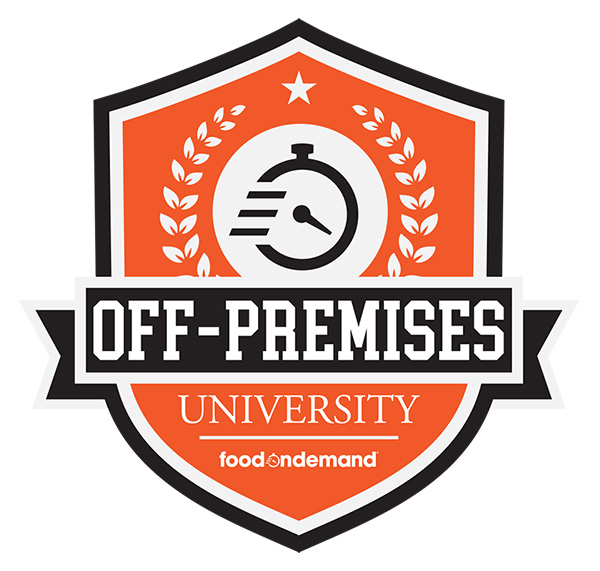A prominent law firm suggests restaurants should start planning ahead for possible bans of delivery and takeout packaging containing “forever chemicals” commonly known as PFAS.
Scientifically known as polyfluoroalkyl substances and informally called forever chemicals, these substances don’t degrade in the environment and have been receiving increasing attention from legislators and environmental groups. That has led some government bodies to consider banning their use in foodservice applications.
In an educational webinar and across a deep collection of resources on its site, Lathrop GPM provided some good insight into what’s going on with PFAS regulation, how it will affect the restaurant industry and how businesses might want to plan ahead when it comes to the large, widely used class of chemicals.
PFAS are a range of more than 5,000 chemicals that are commonly used for non-stick and water-resistant properties, hence a large prevalence across the restaurant industry. They show up in cookwear in the form of non-stick pans, food packaging and packaging coating and up the supply chain in food-processing centers.
According to the CDC’s Agency for Toxic Substances and Disease Registry, “A large number of studies have examined possible relationships between levels of per- and polyfluoroalkyl substances (PFAS) in blood and harmful health effects in people.”
The list of potential health issues is long and varied, from liver issues to specific types of cancer. A new set of studies pointed to lower levels of PFAS causing health issues, as Ally Cunningham, a partner at Lathrop GPM in the firm’s environment and tort practice group.
“On the toxicology side of things, there’s a lot of pressure being applied,” said Cunningham. “There were revised health advisory levels which came out this year and there are some health effects that are being attributed at extremely low levels—like we’re talking parts per quadrillion potential levels.”
She said there are some disputes to the latest reports, but very real pressure from consumers who are pressuring their elected officials to do something.
“It’s in the public eye and it’s creating a lot of pressure,” said Cunningham. “People care more than ever, I think, about what’s in their food and what they’re eating. There are tons of Internet watchdog sites that will publish what you’re eating or sites that claim to let you know what’s clean for food.”
This kind of public scrutiny on what’s in the food chain did not exist 25 years ago when PFAS started becoming a widely used chemical across the food industry.
As Matthew Walker, an associate at Lathrop GPM with a deep background in environmental law and regulatory issues, explained that pressure is leading to new laws that the industry needs to be aware of.
So far, 14 states have their own laws around PFAS, but federal regulation is brewing.
“Most notably is the Keep Food Container’s Safe from PFAS Act of 2021. This has gotten a little bit more attention and has much more significant implications it would essentially ban the use of any type of intentionally added PFAS in food packaging beginning in 2024,” said Walker. “The definition of PFAS is fairly broad so this is a pair of a very powerful piece of legislation at the federal level that if passed would have significant um impacts on the use of PFAS.”
During the firm’s webinar, he said that more than 100 environmental and health organizations have been pushing Congress to pass the bill.
The passage seems quite likely. Craig Miller, a partner at Lathrop GPM with a focus on franchise and commercial litigation, shared a few key things to think through to avoid issues legal and otherwise as both PFAS regulation and consumer outcry ramp up.
He said any restaurant company should first take a close look at how much PFAS is flowing through their supply chain.
“I think some of these are pretty basic but they’re still important nonetheless first you should just start by assessing the potential sources of PFAS within your franchise system supply chain,” said Miller. “Take a look at where things are coming from in your supply chains that might potentially have PFAS in it whether it’s the food packaging your wrappers, your cups, your food containers, cookware, all of that which you might be using in your system that might have some sort of PFAS.”
He spoke directly to franchised systems, as that’s his core practice area, but the advice applies to any restaurant operation small or large.
Once a company knows where the PFAS are, companies should talk to suppliers about alternatives, see what’s out there and figure out what that looks like in the budget, operations and any areas that might require tweaks. He said the need to do this is most pressing for large chains that generally have a larger scale of impact and deeper pockets for litigators.
“Larger companies that are in the crosshairs of these class action suits have already made the decision to start eliminating or phasing out PFAS from their use either because initially because there are regular regulations coming down the pipeline,” said Miller.
He added that telegraphing those changes and updates can also help brands avoid a potential outcry as public awareness of PFAS continues to grow.
Miller, Cunningham and Walker had a lot more details to share. Head to Lathrop GPM to check out the full webinar and the rest of the firm’s PFAS resources.
And don’t miss more discussions around packaging innovation and evolution at the Food On Demand Off-Premises Packaging Summit, this September 26 and 27 in the Dallas area.




